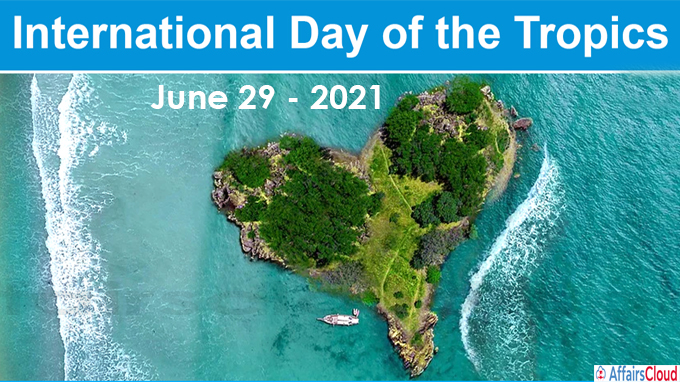 The United Nations(UN)’s International Day of the Tropics is annually observed across the globe on 29th June to celebrate the diversity of the tropical region and to highlight the challenges and opportunities faced by the nations of the tropic.
The United Nations(UN)’s International Day of the Tropics is annually observed across the globe on 29th June to celebrate the diversity of the tropical region and to highlight the challenges and opportunities faced by the nations of the tropic.
Aim:
- To create awareness about the difficulties faced by the tropical areas and the issues affecting the world’s tropical zone.
- To raise awareness and highlight the important role of the countries in the tropics towards achieving the Sustainable Development Goals(SDG).
Background:
i.The United Nations General Assembly (UNGA) adopted the resolution A/RES/70/267 on 14th June 2016 and proclaimed the 29th June of every year as the International Day of the Tropics.
ii.The First International Day of the Tropics was observed across the globe on 29th June 2016.
Why June 29?
The June 29th Marks the launch of the inaugural State of the Tropics Report in 2014 as the culmination of a collaboration between twelve leading tropical research institutions.
2021 State of the Tropics Report:
i.A State of the Tropics Report 2021 – The Digital Divide in the Tropics was launched on 29th June 2021.
ii.James Cook University and the State of the Tropics leadership group acknowledge the contributions made by many individuals and institutions to the preparation and publication of this Report.
Tropics:
The tropics are the region between the Tropic of Cancer and the Tropic of Capricorn. The Tropic of Cancer, 23.5 degrees North latitude is also known as the Northern Tropic and the Tropic of Capricorn, 23.5 degrees South latitude is also known as the Southern Tropic.
Features of Tropics:
i.The Tropical region contains around 95% of the world’s mangrove forests by area and 99% of mangrove species.
ii.Around 54% of the world’s renewable water resources are in the Tropics and almost more than 50% of Tropics populations are considered vulnerable to water stress.
iii.By 2050, the region will host most of the world’s people and two-thirds of its children.




